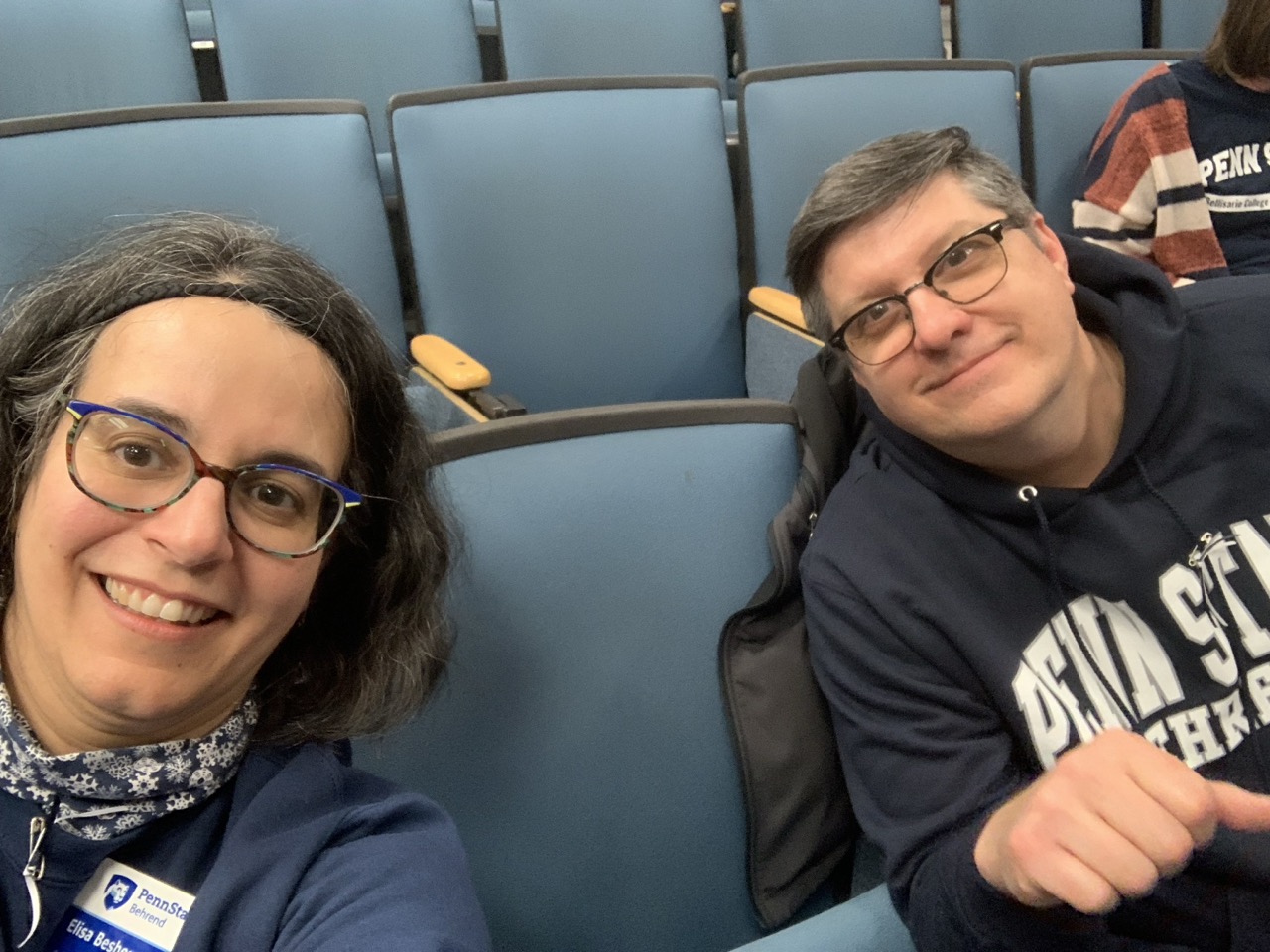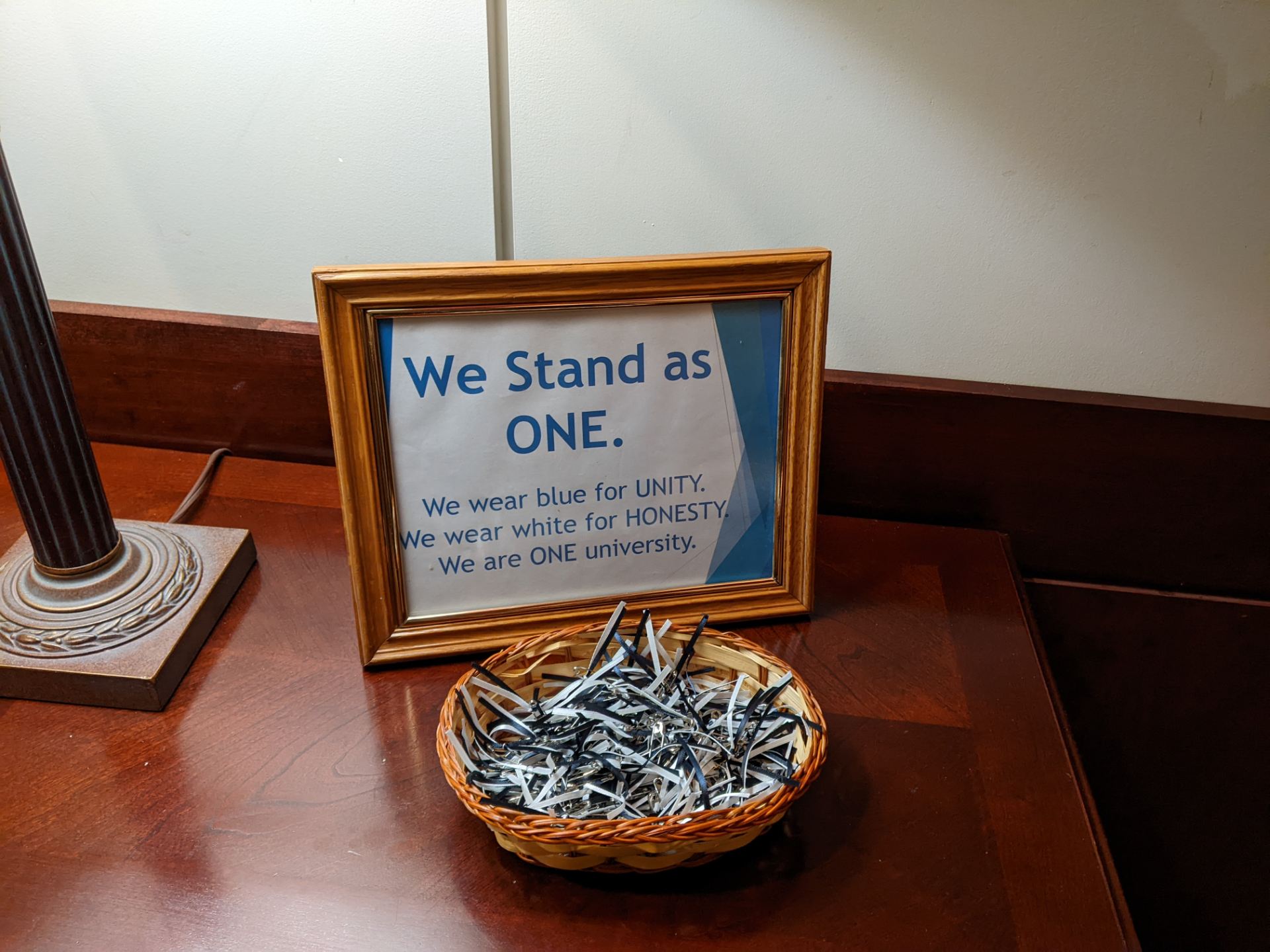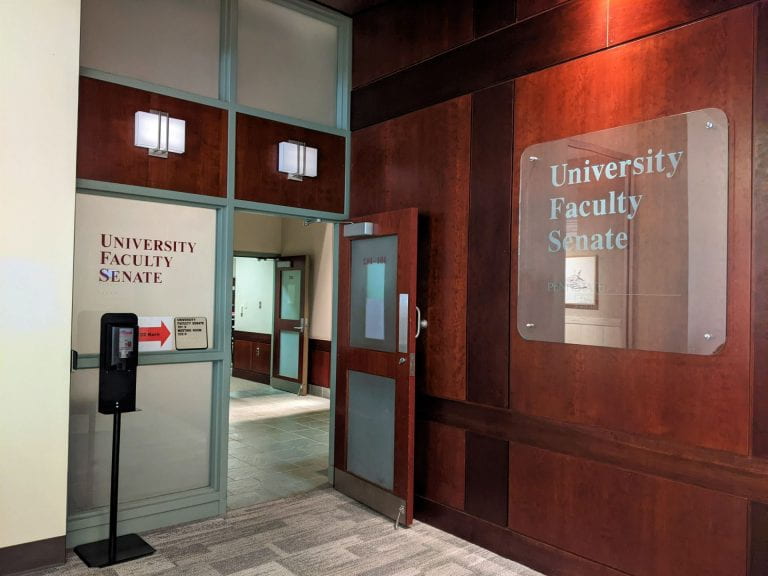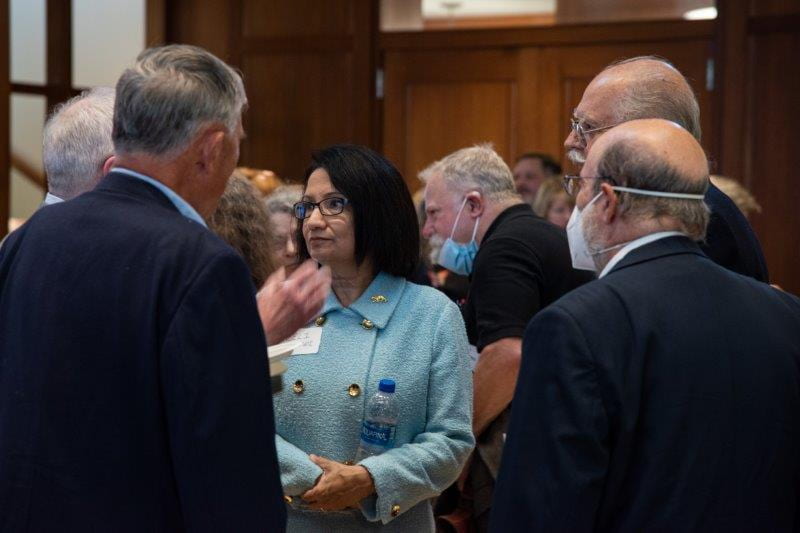About Us
The University Faculty Senate represents all faculty at Penn State through the process of shared governance. The Senate is comprised of faculty senators who are elected from each college and campus.
What the Senate Does
In 2011, the Senate legislated a fixed-size of 200 elected faculty seats. Senate seats are allocated proportionately by unit, based on the ratio of full-time unit faculty to the total number of full-time University faculty. Undergraduate and graduate students are represented on the Senate, as are University administrators. The Senate seeks ways to improve communication and collaborative decision making across the University.
Members of the University community are welcome to attend Senate meetings and, with prior approval of the Chair, may speak regarding a matter before the body. Further information about the Faculty Senate is available in the Constitution, Bylaws, and Standing Rules of the University Faculty Senate, the Faculty Senate website, or by contacting the Office of the University Faculty Senate via our Ask A Question form, via phone at (814) 863-0221, or in person at 101 Kern Graduate Building, University Park, PA, 16802.
Senate Membership
The Senate represents more than 5,600 full-time faculty at 23 Penn State campuses. The Senate is comprised of faculty senators who are elected from each college and campus.
In 2011, the Senate legislated a fixed-size of 200 elected faculty seats. Senate seats are allocated proportionately by unit, based on the ratio of full-time unit faculty to the total number of full-time University faculty. Other Senate representation includes undergraduate/graduate student senators, ex officio, and members appointed by the President. Senate committee chairs invite other members of the University community to participate in the work of the committees as resources.
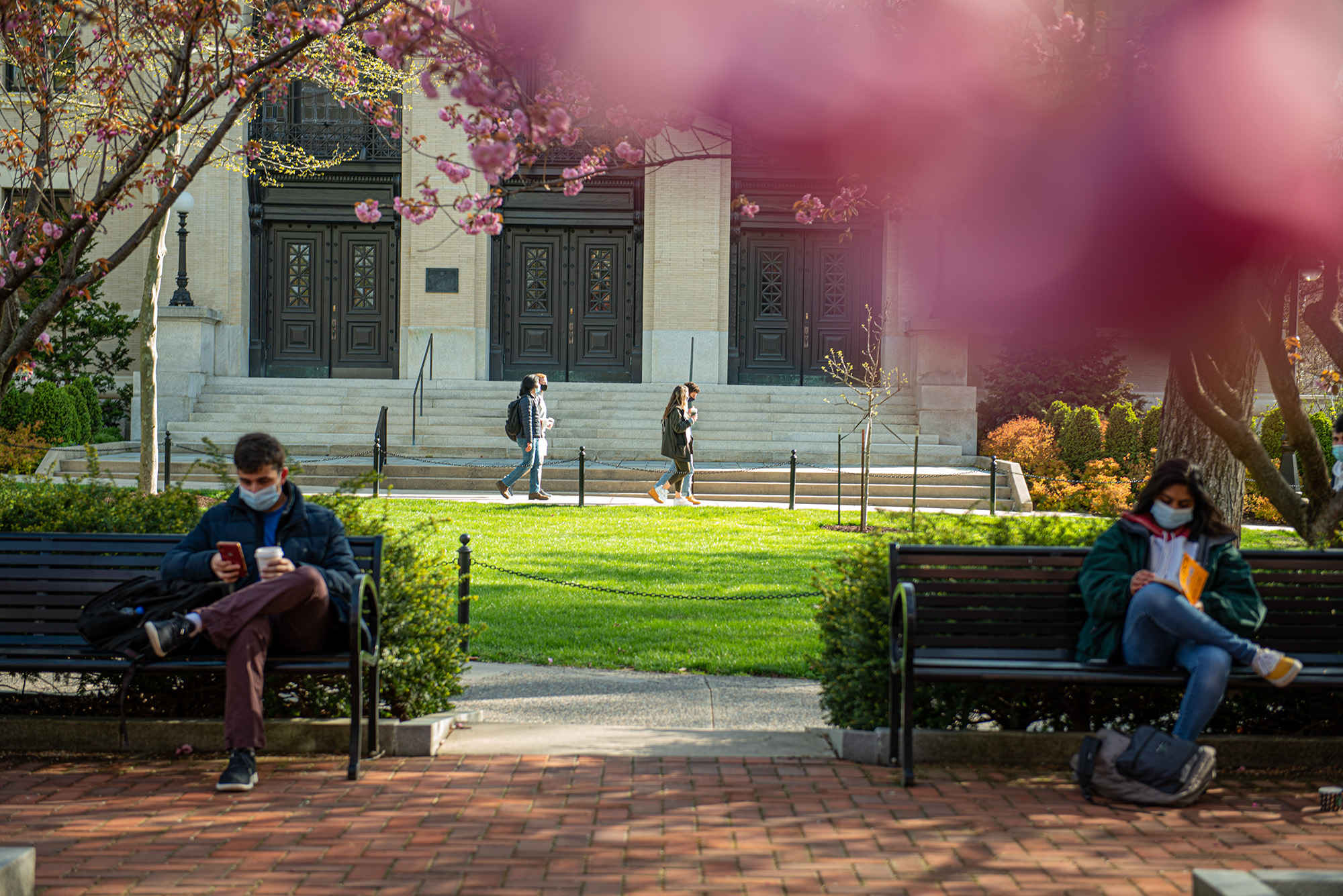
Senate Structure
The Senate is under the leadership of an elected Chair and three other elected officers. It has 17 standing committees, many of which meet regularly to produce reports to present at Senate Plenary meetings. In addition, the Senate elects or appoints members to various joint committees, commissions, and boards, including the University Promotion and Tenure Review and the Faculty Rights and Responsibilities committees. The work of the Senate is accomplished primarily through its committees and subcommittees. An Executive Director is responsible for the operational duties of the Senate and supervises a small staff support team.
Senate History
Before the Penn State Faculty Senate was founded as a formal body more than 100 years ago, the faculty of the University found themselves in need of the opportunity to come together and discuss the business of the institution. The Senate underwent significant transitions to its membership and structure in the 1960s and 1970s, ultimately leading to its contemporary form that broadly and intentionally represents the University’s diverse academic disciplines and campus locations. (Courtesy: Penn State News)

